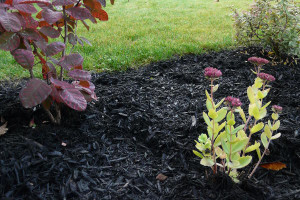20 Reasons Why You Should Use Mulch In Your Garden
20 Reasons Why You Should Use Mulch In Your Garden
1. Adds organic matter to your soil, which helps make your garden healthier and more resistant to pest and plant disease.
2. Provides valuable slow-release nutrients and prevents vitamin loss in plants which saves you money on fertilizer and ammenders.
3. Helps retain moisture in the soil. Mulch acts as a natural roof and insulation layer to protect the soil from the sun. This helps prevent excessive evaporation of water and helps regulate the soils temperature. This helps utilize the minimal amount of rain water we get in the summer and helps save with the amount of water we use.
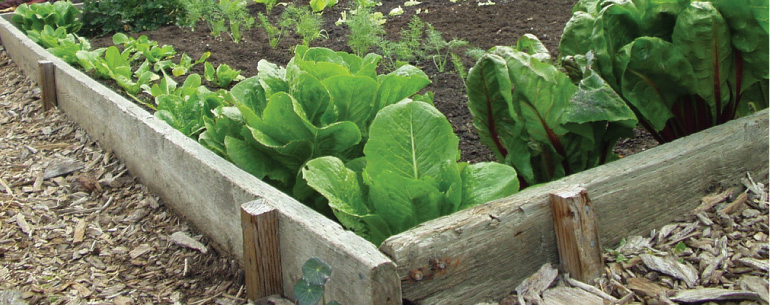
4. Shades delicate seedlings from too much sun since it acts a natural roof and shade.
5. Reduces time spent watering. More time to tend to other tasks and (this is getting redunant) helps save water!
“Mulch can retain up to 70% more water in the soil than unmulched soil.”
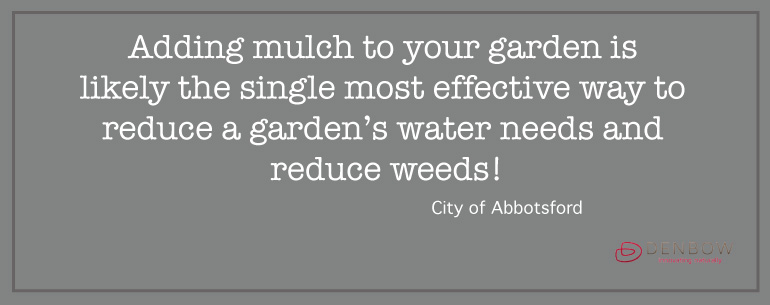
6. Is a great insulator by regulating soil temperature – keeps roots consistently cool in summer and warm in winter which reduces the amount of plant stress and typically provides for a richer, stronger plant.
7. Provides a natural barrier to help prevent weeds. The interlocking layer of mulch prevents the air born weeds from getting rooted in your gardens soil. If weeds do get a start, mulch makes pulling weeds easy.
8. Increases biological activity in your soil by providing beneficial micro-organisms and earthworms with food. Both of which are great for your plants!
9. Improves soil conditions – helps to bind sandy soils and open up clay soils.
10. Saves you time and energy in prepping and cultivating your soil.
11. Stops nutrients from leaching out of the soil.
12. Protects plants from frost damage by acting as a protective covering. We’ve mentioned this before but we felt the insulating factor of mulch is too important to not mention again.
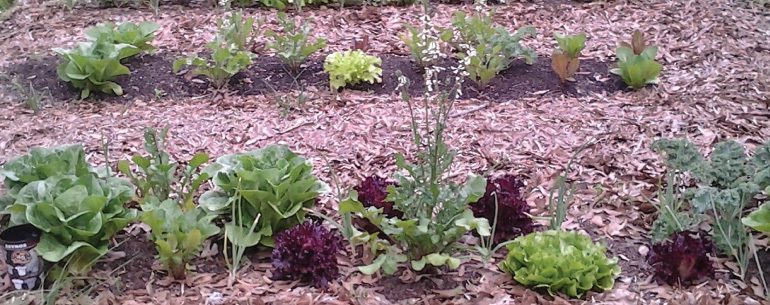
13. Provides a clean surface for produce like fruit and nuts to fall, ready for harvesting.
14. Improves soil drainage and structure as it decomposes.
15. Provides support around plants especially young seedlings. You can “pile up” a little mulch around weaker steams giving the young plant the extra help it needs to thrive.
16. Recycles waste materials. This is one of the main principles that we operate from. We LOVE to recycle forest residuals into useful products.
17. Protects plants from heavy rain. The protective interlocking nature of mulch protects and helps bind together the plant structure.
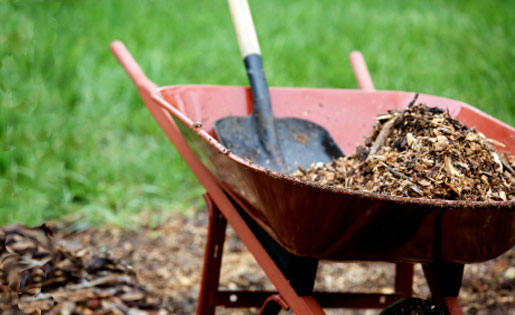
18. Prevents erosion and soil compaction particularly from foot traffic on pathways and play areas.
19. Improves the visual appearance of your garden. Especially if you use a beautiful coloured mulch.
20. Can provide a home for plant-friendly insects.
We love to hear from you so please either share this with your friends or you can email us any questions you might have. We hope you enjoyed our 20 Reasons for Mulch.

